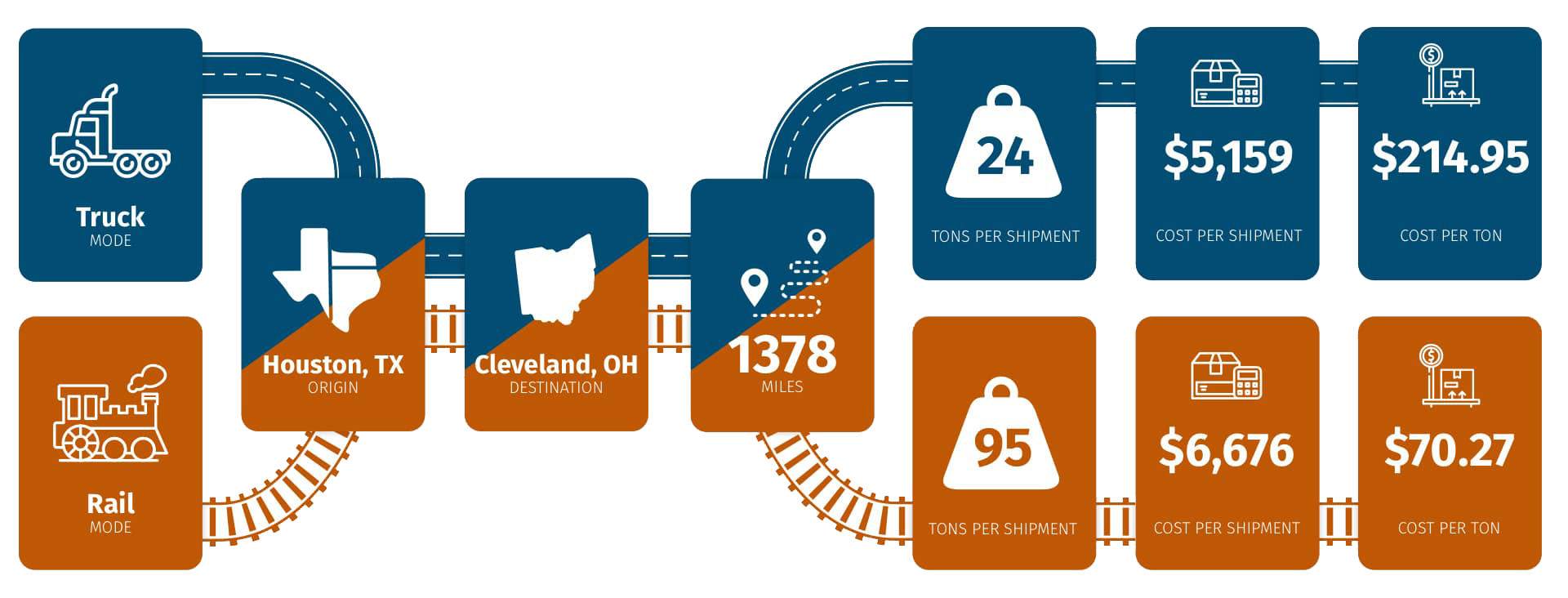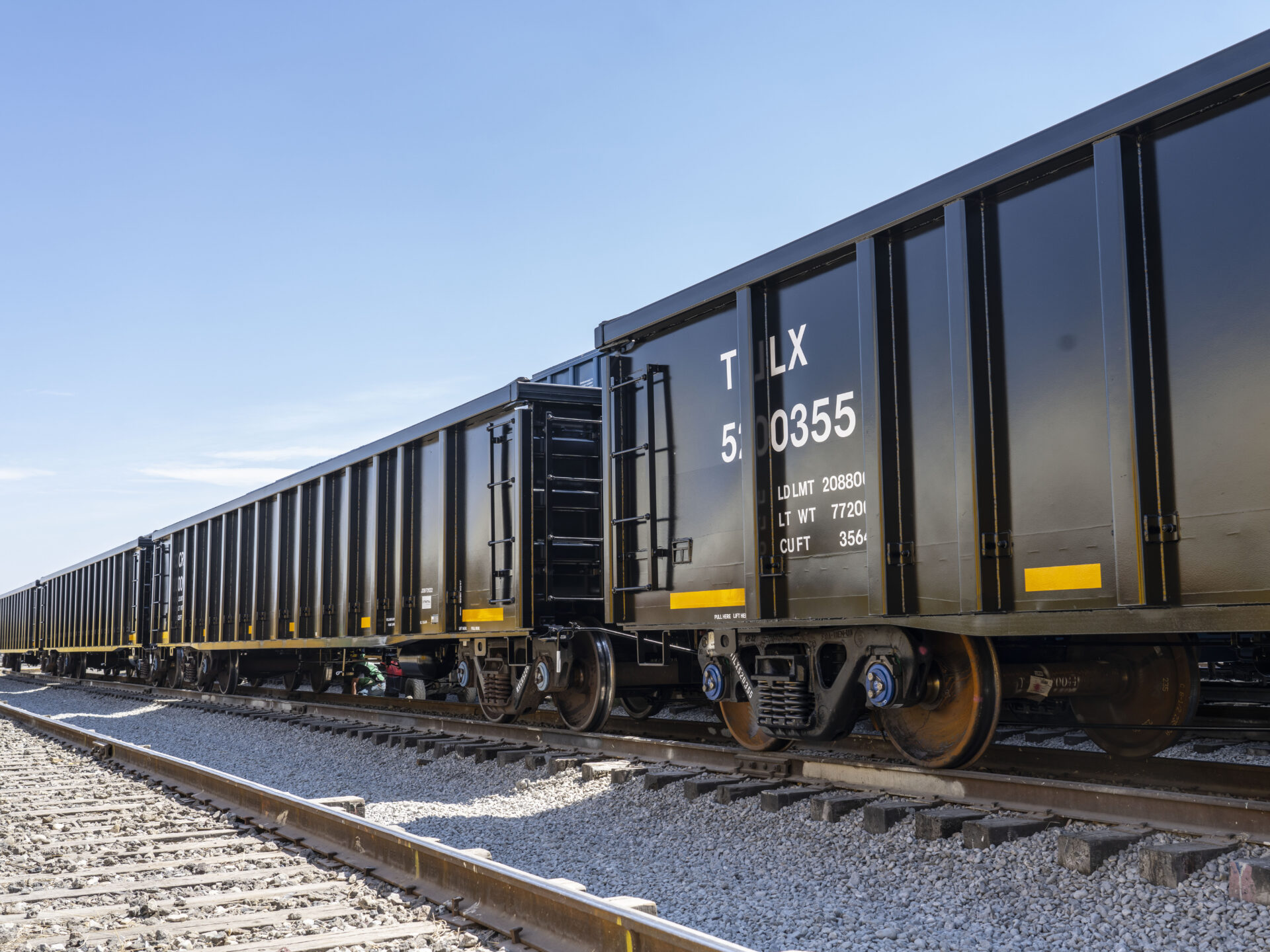COST COMPARISON: RAIL SHIPPING VS. TRUCKING
This article was authored in its original form by our partners at RSI Logistics.
The original post can be found here.
When choosing the right shipping method or strategy for your business, cost is among the top considerations alongside reliability and supply chain predictability. However, arriving at a supply chain strategy that optimizes costs is more complicated than comparing two numbers on a spreadsheet. Often, the optimal solution involves a strategic combination of methods.
Employing multimodal rail and truck shipping often enables shippers to realize cost savings1 , even in some cases in which the receiver is not situated near a rail. By optimizing their shipping strategies to maximize the cost savings of rail transit, shippers may be able to significantly reduce their logistics expenditures.1
Comparing Transportation Modes
Rail and truck transportation can offer advantages over each other and also can be more versatile when used together in multimodal transport.2 Comparing the costs per ton-mile of each mode is one way to see the advantages of each. While the initial differences might seem small, the savings can add up quickly over longer distances and larger volumes.
Trucking is the most widely used mode of transportation, since nearly any shipper can use it to load and receive materials.3 Rail transportation, on the other hand, requires both the shipper and consignee to have the ability to directly load and unload rail shipments. By choosing the optimal rail transload facility, you can maximize cost savings through both modes of transportation.2
Trucking vs. Rail: An Example Case
When comparing the costs of rail versus truck shipping for moving bulk commodities from Houston to Cleveland, it’s important to note that the truck cost in this lane is around $5,159 per load, whereas the rail cost is $6,676 per car.4 However, to make an accurate comparison, it’s essential to apply a ratio of 1:4, since one railcar is equivalent to four truckloads.5

Leveraging Multimodal Shipping
Shippers are generally aware that there is a potential for savings in transporting goods via rail, as opposed to trucks. However, in numerous cases, receivers’ limited capacity to accommodate material only by truck has made it challenging to take advantage of the economies of both long-haul rail transportation and the speed and flexibility of local truck delivery. To overcome this challenge, shippers have come to rely on the extensive bulk terminal network in North America.
By combining rail and truck transportation through a bulk transfer terminal, the cost per net ton is approximately $95.54.4 This is relatively more expensive than rail direct, which costs $70.27 per net ton, but significantly cheaper than over-the-road truck transportation, which costs $214.96 per net ton.4
Railcar Equipment Costs
When it comes to using rail or multi-modal transit, it’s crucial to keep in mind the cost of railcar equipment along with the transit costs. The equipment cost for each railcar shipment is approximately $900.4 However, these costs have only a minimal effect on variable costs per net ton. With multimodal transit, the cost per net ton rises to $105.01.4 Nevertheless, when compared to over-the-road trucking’s $214.96 per net ton, multimodal transport still offers significant savings.4
Comparing Other Costs
Comparing the costs of rail shipping and truck shipping is not just about looking at the numbers on your balance sheet. You also must consider additional costs that might not be immediately apparent. For instance, truck shipping can be affected by driver shortages, fluctuating gas prices, weather events, and other issues that can impact pricing and delivery times.6
Another important factor to consider is the environmental cost of each mode of shipping. Railcars have the ability to transport a larger volume of goods in each shipment, which has the potential to greatly reduce carbon emissions.7
With shipping of any kind, the shortest or most straightforward route might not always be the most efficient or cost-effective. By leveraging rail shipping, you can unlock cost savings, even when your recipients are not situated directly on rail routes.2 Employing multimodal strategies is a useful approach to reducing shipping costs.
Reach out to TrinityRail to start your journey toward rail shipping.
1 RailGateway, Intermodal Transportation Advantages, December 2022
2 Union Pacific, What Is Intermodal Shipping … and Why Should Shippers Care?, August 2020
3 U.S. Bureau of Transportation Statistics, Freight Transportation System Extent & Use, 2020
4 RSI Logistics, Comparing the Costs of Rail Shipping vs. Truck, February 2024
5 Union Pacific, 12 Train Facts You Might Not Know, March 2022
6 Union Pacific, The Pros & Cons of Truck Shipping: Cost, Speed, Capacity and More, January 2023
7 TrinityRail, Building a More Sustainable Supply Chain, 2023
IF YOUR BUSINESS RELIES ON RAIL, YOU CAN RELY ON US.
WHAT CAN WE DELIVER FOR YOU?
"*" indicates required fields
